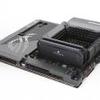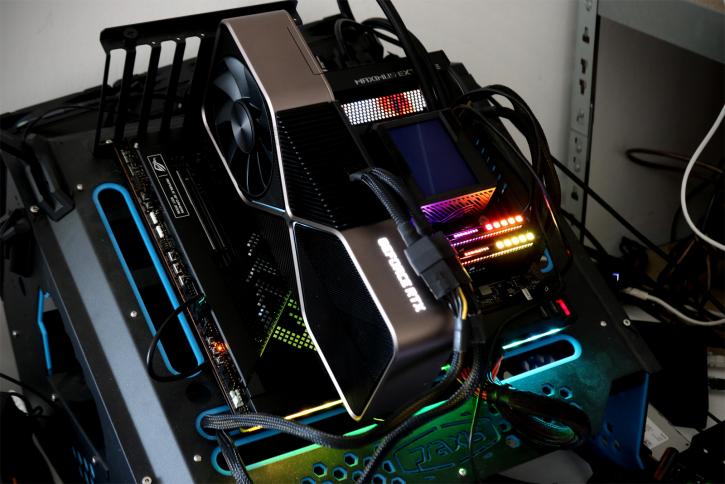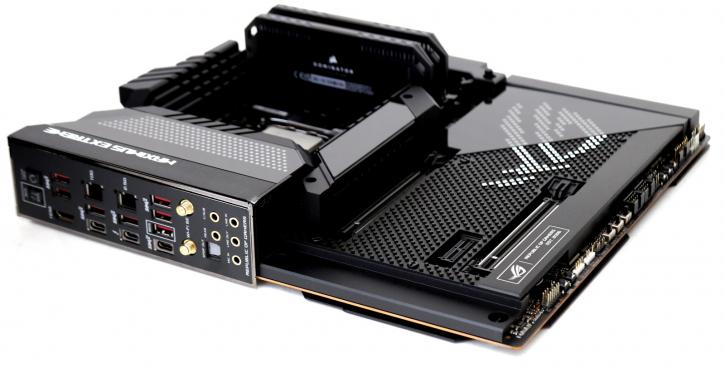Final Words & Conclusion
Final Words
The 12th Gen intel core CPUs are here, Intel has come a long way, but the new architecture shows very powerful performance cores. ASUS is releasing a total of five motherboards from the same series, including two Maximus Z690 Extreme models. All Maximus Z690 motherboards support only DDR5 memory and have PCIe 5.0 expansion slots. One notable difference is that the Extreme and its Extreme Glacial water block variant both contain an integrated M.2 slot with a PCIe-5.0 interface, whereas the Z690 does not officially support this. A DIMM.2 PCIe 5.0 SSD can only be installed on the other ROG Maximus Z690 boards as an expansion card.
Expect to pay 1100 EUR/USD for this motherboard which by definition is not much faster than a 200 USD one; however it's all about features. In the gaming world, ASUS is well recognized for its high-end gaming products, which are marketed under the Republic of Gamers name. When it comes to flagship performance, the ROG MAXIMUM Z690 EXTREME is unquestionably among the desirable option on the market. In terms of technology and functionality, it's one of their most advanced and feature-rich motherboards to date. And then there's the fact that it's a beast to behold. This build was made possible by using only high-quality components, and ASUS has proceeded to add features such as a 2.5-gigabit and 10-gigabit Ethernet ports and a fantastic WIFI6E (AX) network solution.
DDR5 Memory
Memory compatibility should not and likely will not be an issue as long as you stick to QVL supported DIMMs. The sweet spot will be 5200 MHz DDR5 CL40. The more expensive kits will reach CL38. Check out Corsair's, TeamGroup, and G.Skills offering to start with, as they'll have impressive stuff to offer. Nice to see is the new XMP 3.0 profile support. Manufacturers can apply three SPD profiles with more minor changes like latency. Then, the end-user can store another two profiles, so you can tweak that memory and store it directly into the DIMM profiles. Support for this is announced but not yet implemented.
Energy efficiency
With these processors now fabbed at 10nm, you may see some exciting energy efficiency; we expected to drop dead low IDLE energy levels due to the E-cores, but the system comes back at 80 Watts power draw in IDLE, granted our motherboard does have a roughly 7 Watts of RGB going on. Still, even then, it's quite a lot. Under full stress on the processors, the system came back at roughly 325 Watts and overclocked we reached 450 Watts. Energy efficiency for this motherboard and processors as such are average at best. Keep that in mind with your cooling choice, as processor wattage usually is 1:1 in line with cooling performance. We recommend an excellent LCS.
Noteworthy is that Intel no longer provides a total design power (TDP), instead referring to a 'processor base power' of 125W and a 'maximum turbo power' that is significantly greater. Intel, at the very least for the overclockable K processors, has ended the confusion that the PL1 and PL2 power constraints produced in previous generations with this announcement. The current norm for these CPUs is that they can boost indefinitely unless the PC maker (or, in the case of self-build, the user) decides otherwise to keep within the limitations of the cooling and power supply systems.
Overclocking
We see the same results on all ASUS Z690 motherboards we tested; ergo, the limiting factor is the processor and not the motherboard. Depending on your objectives, there are numerous approaches to overclock an Intel platform. With the Core i9-12900K, you'll achieve roughly 5.3 GHz across all performance cores. And the proc is going to need something like 1.4 Volts. Most modern motherboards will have an automated setting for that. All eight performance cores were overclocked to 5.3 GHz but at the cost of yet another 125W in energy consumption. We gained 5% extra performance due to this. As such, we feel overclocking is a bit unneeded, perhaps even an illogical thing to do. But you can if you want to, and this platform certainly will assist you greatly with it.
The conclusion
Everything about the Z690 EXTREME is just that EXTREME and leaves little else to be desired. That boils down from M2 connectivity, WIFI6E, 10GigE LAN, Cooling, LCD screens, RGB, connectors upwards to tweaking, BIOS, and of course, the exquisite design. Also extreme is its pricing. The MSRP sits just at 1100 USD (!), and that's just too much. So who's this motherboard intended for? For those looking for enthusiasts and extreme features, the Extreme series from ASUS is a great choice. Dual M.2 slots + two extra on that sweet PCIe Gen 5.0 ready add-in DIMM2 card, overclocking assistance, a more efficient, very luxurious power delivery setup. Then USB ports (including Thunderbolt), RGB display, LCD, physical buttons for BIOS switching, and 2.5G and 10G LAN connections are all available to you on this motherboard. All things combined make the however a solid foundation for an enthusiast build or a creator PC, depending on your preferences. The answer to the question "should you buy this motherboard?" boils down to how much money you have to spend on it and what requirements you need as this motherboard will be priced at 1100 EUR/USD.
In our belief for lots of people, Alder Lake is what they've been waiting for, a completely new architecture with improved IPC and fabulous overall performance, so lots of people will make the step to upgrade as it also brings PCIe Gen 4.0 and 5.0 as well as DDR5 support and WIFI6E to the table. It has the most robust VRM setups we've ever seen, and it will undoubtedly prove to be a popular choice among overclockers and enthusiasts seeking extreme performance. Among its many features are four DDR5 DIMMS, which provide the newest memory technology, two PCIe 5.0 lanes for incredibly high-bandwidth expansion cards, and a few future-proofing features. There are a plethora of USB 3.2 Gen 2 connections throughout, some of which can charge devices at speeds of up to 60W! Dual Thunderbolt 4, an abundance of Gen4 M.2 mounts, and much more among the many features. Finally, the audio processing is impressive, delivering 120 dB SNR while running at 32-bit/384-kHz. This board is a dream; it has pretty much everything done right, but hot daumn, that price ... but that doesn't make this board less desirable or the excellent quality product it is.
- Sign up to receive a notification when we publish a new article
- Or go back to Guru3D's front page.




